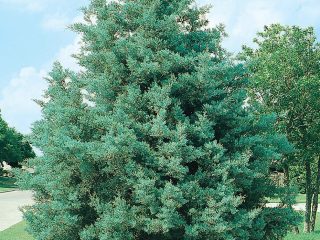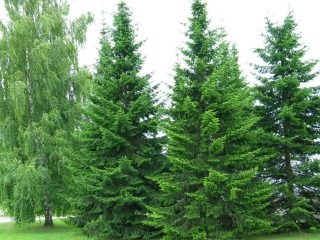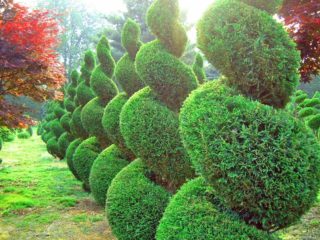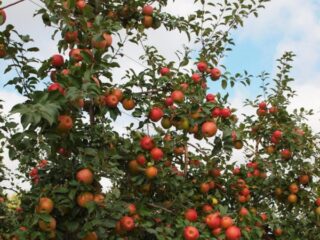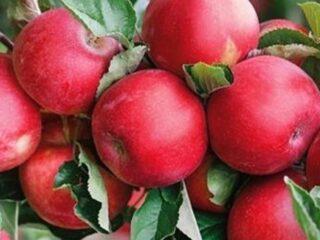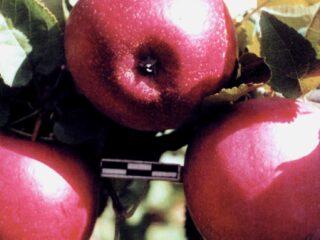Content
Grafting of apple trees in summer is carried out from the end of June until the end of August. This is a fairly effective procedure that does not involve preliminary preparation and storage of cuttings. There are several grafting methods, all of which are discussed in detail in this article.
Benefits of summer vaccination
Apple trees are grafted at different times. Moreover, if you plan the procedure for the summer, you can get several tangible benefits at once:
- Such vaccinations quickly take root - literally within a year they become full-fledged shoots.
- The deadlines are not strict, you can choose in a wide range. This makes it possible to conduct several experiments - if one graft does not take root, you can actually have time to graft another.
- You can reliably determine the grafted variety (but there may be confusion with cuttings, so it is better to sort them in advance and clearly mark them).
- In summer there is no need to store cuttings for a long time, which is especially difficult when planning grafting for spring.
- There are no large influxes at the site of fusion; often it simply remains unnoticeable.
There are not many disadvantages to grafting an apple tree in summer. The main disadvantage is associated with high temperature. In hot weather, cuttings and cutting areas quickly dry out. Therefore, it is important to cover them with a significant layer of tape to ensure a kind of greenhouse effect.
Timing for summer grafting of apple trees with cuttings
As already mentioned, in the summer you can choose the timing of apple tree grafting quite freely. There are no strict rules, since the temperature both during the day and at night is quite acceptable.
Work can begin from the last ten days of June until the first days of September. But it is advisable to do everything before mid-August in order to insure yourself in case of the first (albeit minor) frosts. Conventionally, the main period can be considered July.
It is also possible to graft an apple tree with cuttings in August. The main condition is to be in time before the average daily temperature drops to +15OC (work must begin two weeks before). In this case, the timing will be as follows:
- in the middle zone, Moscow region - until mid-August;
- in the southern regions - until the end of the month;
- in the North-West, Urals - until August 10;
- in Siberia and the Far East - until the first of the month.

Grafting an apple tree in summer can be done from the end of June to the last ten days of August.
Preparing the rootstock and branches
Regardless of the method of grafting an apple tree in the summer, it is necessary to carefully prepare the scion and also select the rootstock. The main criteria and selection rules are described below.
Scion
There are special requirements for scions, since the success of grafting apple trees in summer largely depends on them. The main criteria are:
- escape of the current season (in rare cases a two-year-old is allowed);
- diameter approximately 10 mm (about the size of a pencil);
- length 30-40 cm (can be shortened during the procedure);
- healthy appearance (including the kidneys), absence of any damage, even minor;
- The cut for grafting an apple tree in summer should be uniform and light green in color.
Preparation of the scion comes down to cutting it off and leaving 2-3 buds. No more is needed - in most cases even two are enough. Since apple tree grafting is carried out in the summer, there is no need to worry about the safety of the grafting material. This is one of the main advantages that many gardeners note.
Rootstock
For grafting apple trees in summer, mainly young rootstocks aged 1-3 years are used. Although it is also possible to consider more mature trees 5-8 years old. If the tree is quite old (from 10 years), it can also be used as a rootstock. However, in this case, they strive not so much to obtain a new variety, but to rejuvenate the old one.
It is worth considering that the variety that is used as a rootstock for grafting apple trees in the summer must have good winter hardiness and be optimally suited to the climatic conditions of a particular region. This is especially true for Siberia, the Urals, and the Far East.
It is better to graft apple trees in summer near the base of the skeletal branch at a distance of 30-40 cm from the central trunk. Moreover, the rootstock should grow upward (even at an angle), but not to the side (parallel to the ground), and especially not to slope downwards.
Required materials and tools
To vaccinate an apple tree in the summer, you need to use a grafting pruner or budding knife.You can also use a regular blade, but such work requires a certain skill and precision of movements. The main requirement is that the knife must be perfectly sharp, with a fairly weighty blade.
Also, to vaccinate an apple tree in the summer you will need the following:
- special film - it gradually breaks down under the influence of sunlight, so there will be no need to remove it;
- instead, you can use plastic tape or electrical tape, or a wide band-aid will also work;
- garden var;
- clean rag;
- tags for marking (so as not to confuse varieties);
- disinfectant liquid for knife blades or pruning shears (you can use a pink solution of potassium permanganate - 1 g per 1 l).

It is most convenient to vaccinate in the summer using a special pruner
Garden varnish can be purchased ready-made or made yourself. To do this, take paraffin (can be replaced with beeswax), rosin and natural drying oil in equal quantities.
The paraffin is melted, brought to a boil, and then other ingredients are added, mixed and allowed to cook for 30-40 minutes over low heat. Then knead to achieve a uniform consistency.
Place in any container that can be tightly closed with a lid. It is advisable to store it in a cool and dark place - you can put it in a cellar or keep it in the refrigerator. The product is good for three years.
How to vaccinate an apple tree in summer
In fact, in summer you can use all the grafting methods that are used at other times of the year. It is quite simple to connect the scion to the rootstock by leading it behind the bark or into a cleft. There are also more complex options, for example, a bridge or copulation. Step-by-step instructions for each case are described in the following sections.
Into the cleft
This is a fairly simple method that allows you to use both mature and young trees as a rootstock. The main stages of grafting an apple tree in the summer using this technology are as follows:
- At a low height, a branch of the rootstock is cut to create a straight “stump”.
- Place the knife clearly along the center line (diameter) and press down a little to create a shallow split (3-5 cm is enough).
- To expand it, drive in a small wedge or insert a screwdriver, having previously disinfected the surface.
- The scion cutting is sharpened on each side and, if necessary, sharpened so that it matches the depth and shape of the split.
- Next, for proper grafting of the apple tree in the summer, the scion is inserted to its full depth and moved to any edge, as in the photo.
- Then the scion needs to be trimmed, leaving 2-3 buds.
- Secure with tape or film. The winding is made as tightly as possible, moving in a spiral, first upward, then downward.
- All open areas are treated with garden varnish, as shown in the diagram.
- After about a month, the first leaves will begin to form. At this point it is better to remove the tape, since it is quite hot in summer. In addition, after grafting, the trunk should begin to grow in width, and a tightly wound tape at this stage will only get in the way.
For the bark
Another simple method of grafting, accessible even to novice gardeners. Use only for mature, but not too old trees (up to 10-12 years) for rejuvenation. The sequence of actions is as follows:
- The central trunk or one of the skeletal branches is cut down.
- Make several cuts in the thickness of the bark. Their length should be small - within 3-4 cm. If the cut is quite wide, several cuttings can be prepared in it at once.
- The scions are prepared, oblique cuts are made from below and 2-3 buds are left.
- Insert them into the bark as tightly as possible.
- Then fixation is carried out using film and electrical tape. All open cuts should be treated with garden varnish.
By eye (budding)
Another way to graft an apple tree with fresh branches in the summer is with an eye (also called budding). In this case, not a cutting is used, but a bud. The sequence of actions is as follows:
- Take a sharp knife, disinfect the surface and make an incision. It should go vertically, penetrating to the bark. On top you get a small crossbar - the shape of the letter “t”.
- Use a knife to carefully pry off the bark, after which you need to insert the prepared bud. As a result, it should come into maximum contact with the wood.
- Place the bud closer to the bottom of the incision. In this case, the edges should be fairly even; if necessary, they can be trimmed with a knife.
- Next, apply electrical tape or other film. It is laid in a spiral so that it is in maximum contact with the branch. Moreover, you need to move first from the bottom, and then in the opposite direction. The bud (eye) is left open - this is a mandatory rule for grafting an apple tree in the summer. The areas are treated with garden varnish.
By the bridge
Grafting of an apple tree in the summer is also carried out with a bridge, which is made from several cuttings.In this case, it is allowed to use not only varietal varieties, but also wild ones. The step-by-step instructions are as follows:
- Peel the bark of the rootstock to a healthy area, wipe it thoroughly and make several cuts in the shape of the letter “T” with a sharp knife. They should be small - up to 4 cm long.
- Prepare the cuttings - remove each bud. An incision is made obliquely (3-4 cm).
- Bend the bark a little and insert each cutting into the cut. The result will be a kind of bridge, as shown in the diagram.
- The next stage of grafting an apple tree in summer is standard - the cuttings are fixed with tape, making turns in a spiral, first from the bottom up, then in the opposite direction. All open areas should be lubricated with garden varnish.
- To ensure that the cuttings hold well, they are nailed on each side - top and bottom. This is a controversial method because it gives good fixation, but at the same time leads to more damage.
Copulation
You can also graft an apple tree onto an old tree using the copulation method. Moreover, there are two varieties - simple and complex. In the first case, they act like this:
- They approach the rootstock and make an oblique cut (the direction of the acute angle is towards you). Exactly the same cut is made on the scion right under the very first (lower) bud. It is important that both cuts are the same - it is better to make them one after the other with a confident movement.
- Apply the scion to the tree and wrap it tightly with special tape or film.
- Cut off the top of the scion (it is enough to leave 2 or 3 buds).
- The cut areas are treated with garden varnish. It will improve survival rate and protect the apple tree during grafting in the summer.
There is also an option for improved copulation, which is somewhat different from the simple method. The algorithm of actions is as follows:
- At the first stage, oblique cuts on the cuttings and rootstock are made exactly the same.
- Then they work with the rootstock: they step back a third of the length from the top of the cut and form a “tongue”. To do this, you will need to make a cut to a depth of only 1cm.
- A similar “tongue” is formed on the cutting, which will be the scion.
- Next, they are inserted into the rootstock so that the “tongues” overlap each other.
- In order for apple tree grafting to be successful in the summer, the area must be well wrapped with film and the scion must be cut off above the second bud. Next, treatment is carried out using garden varnish.
Care after vaccination
In order for apple tree grafting to be successful in the summer, it is necessary to organize special care in the first days:
- It is better to shade the place by placing a white shield in the form of fabric or canvas (it can be attached to branches or a special frame can be made).
- Young seedlings are given water weekly (10 liters) if there is no rain. Mature trees are watered twice a month if there is a drought.
- It is advisable to loosen the soil in the tree trunk well to ensure air flow to the roots.
- In July and early August, it is recommended to apply complex mineral fertilizers, for example, azofoska.
- If the scion begins to bloom, all inflorescences are carefully removed.
Common Mistakes
Experienced and even novice gardeners make certain inaccuracies that can prevent the graft from taking root. The most common errors are:
- Wrong choice of variety.As a scion and rootstock, you need to choose only those varieties that are optimally suited for cultivation in a given region.
- Confusion with cuttings - to prevent this, it is recommended to sort them and label them with tags.
- Insufficiently sharpened or untreated blade. Before starting work, it must be washed in a solution of potassium permanganate or another antiseptic.
- Wrong choice of kidney for budding. Only a closed one will do. If it is open, it should not be used.
- Often beginners leave quite a lot of buds on the scion, but 2-3 is enough. If you do copulation, it is better to leave 3-4.
- When grafting an apple tree in the summer, it is better to choose the northern or western part of the shoot, since the southern and eastern parts receive too much sunlight.
Conclusion
Grafting of apple trees in summer is carried out using cuttings or buds of suitable varieties. This is a fairly effective procedure, the survival rate often reaches 80-90% and even 100%. Moreover, there is quite a lot of time - if the scions do not take root in July, you can try again in August. The video shows how to summer graft an apple tree with green cuttings.


















